Pas de biographie disponible.
Compositeur Musique additionelle Librettiste Parolier Metteur en scène Chorégraphe Producteur création Producteur version
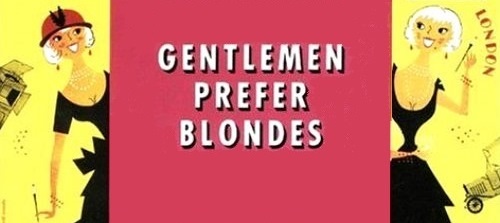
Musical
Musique: Jule Styne • Paroles: Leo Robin • Livret: Anita Loos • Joseph Fields • Production originale: 6 versions mentionnées
Dispo: Synopsis Génèse Liste chansons
Genèse: The musical opened on Broadway at the Ziegfeld Theatre on December 8, 1949 and closed September 15, 1951, after 740 performances. It was produced by Herman Levin and Oliver Smith, directed by John C. Wilson, and choreographed by Agnes de Mille, with vocal direction by Hugh Martin. Financial backers included Harold M. Esty, Jr. The original cast featured: Carol Channing as Lorelei Lee, Yvonne Adair as Dorothy Shaw, Rex Evans as Sir Francis Beekman, Anita Alvarez as Gloria Stark, Eric Brotherson as Henry Spofford, Jack McCauley as Gus Esmond, George S. Irving as Josephus Gage, Irving Mitchell as Mr. Esmond Sr., Alice Pearce as Mrs. Ella Spofford, Reta Shaw as Lady Phyllis Beekman, June Kirby as Sun Bather. Several well-known blonde actresses, including Betty Hutton, Jayne Mansfield (Carousel Theater, 1964), Mamie Van Doren, Barbara Eden (Florida, January 1999) and Morgan Fairchild, have starred in regional and summer stock productions of Gentlemen Prefer Blondes over the years. The musical ran in the West End at the Princes Theatre, opening on August 20, 1962 for 223 performances, and featured Dora Bryan as Lorelei Lee, Anne Hart as Dorothy, and Bessie Love as Mrs. Ella Spofford. A revised version entitled Lorelei opened on Broadway at the Palace Theatre on January 27, 1974, and ran for 320 performances. This production also starred Carol Channing, for which she received a Tony Award nomination, Best Actress in a Musical. The Goodspeed Opera House, East Haddam, Connecticut, revival ran in November 1994, and featured KT Sullivan as Lorelei Lee, Karen Prunzik as Dorothy Shaw, Jamie Ross as Josephus Gage, and Allen Fitzpatrick as Gus Esmond. The production transferred to Broadway at the Lyceum Theatre on April 10, 1995 and closed on April 30, 1995 after 16 previews and 8 performances. A concert staging of the musical was mounted as part of the "Discovering Lost Musicals" series directed and produced by Ian Marshall-Fisher at Barbican Cinema 1 in London in 1997, which featured Louise Gold as Lorelei Lee, Kim Criswell as Dorothy Shaw, and Dilys Laye as Mrs Ella Spofford. The Open Air Theatre, Inner Circle, Regent's Park, London, production ran from July 23, 1998 through September 1, 1998, and featured Sara Crowe as Lorelei Lee and Debby Bishop as Dorothy. 42nd Street Moon theatre company, San Francisco, California, presented the musical in April 2004. Presented by the Encores series of Great American Musicals in Concert at the New York City Center May 5-12, 2012 with Megan Hilty as Lorelei Lee and Rachel York as Dorothy.
Résumé:
Création: 8/12/1949 - Ziegfield Theatre (Broadway) - représ.
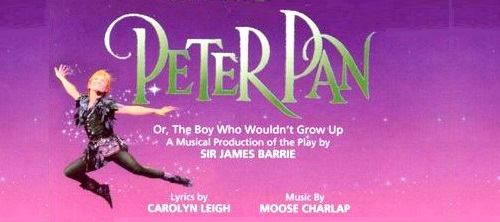
Musical
Musique: Jule Styne • Moose Charlap • Paroles: Adolph Green • Betty Comden • Carolyn Leigh • Livret: Production originale: 14 versions mentionnées
Dispo: Synopsis Génèse Liste chansons
Genèse: Several versions of Peter Pan were mounted early in the 20th century. In a nod to the original play, and the pantomime tradition it derives from, the title character of Peter Pan in the musical is usually played by a woman, including Mary Martin, Sandy Duncan and Cathy Rigby, among others. Producer Edwin Lester, founder and director of the Los Angeles Civic Light Opera, obtained the American rights to Peter Pan and adapted it as a play with music for Mary Martin. The show was not successful in its pre-Broadway West Coast tour, so director Jerome Robbins hired lyricists Comden and Green and composer Jule Styne to add more songs, including "Never Never Land," "Distant Melody" and several other numbers, turning the show into a full-scale musical. The musical, instead of using Barrie's original ending, in which Peter simply allowed Wendy and the other children to return home, includes an additional scene that Barrie had written later and titled An Afterthought. In this ending, Peter returns after many years to take Wendy back to Never Never Land for spring cleaning. He finds that he has been away so long that Wendy is now an adult, married woman with a daughter. Despondent at first, he is delighted when Wendy's daughter Jane offers to be his new mother, and instead takes her with him. The 1954 musical version of Peter Pan opened on October 20, 1954 at the Winter Garden Theatre in New York for a planned limited run of 152 performances. The show had been sold to NBC, which ensured that it was a financial success despite the limited run. It played its final performance on February 26, 1955. The revised score and Tony Award-winning performances by Martin and Ritchard made Peter Pan a success. A Broadway cast album was made of the songs, and is still in print today. The show opened in a busy Broadway season, competing with such notable shows as The Boy Friend, Fanny, Silk Stockings, and Damn Yankees. However, while still in tryouts in Los Angeles, a deal was made for the show to be broadcast on the NBC anthology series Producers' Showcase on March 7, 1955. The show closed so that it could be broadcast on television, although box office continued to be strong throughout the Broadway run. Television productions In 1954, Fred Coe, production manager for NBC in New York, began producing Producers' Showcase, a 90-minute anthology series that aired every fourth Monday for three seasons. One aim of the series was to broadcast expensive color spectaculars to promote the new color television system developed by NBC's parent company RCA. On March 7, 1955, NBC presented Peter Pan live as part of Producers' Showcase (with nearly all of the show's original cast) as the first full-length Broadway production on color TV. The show attracted a then-record audience of 65-million viewers, the highest ever up to that time for a single television program. Mary Martin and Cyril Ritchard had already won Tony Awards for their stage performances, and Martin won an Emmy Award for the television production. It was so well received that the musical was restaged live for television (again on Producers' Showcase) on January 9, 1956. Both of these broadcasts were produced live and in color, but only black-and-white kinescope recordings survive. Peter Pan was restaged on December 8, 1960, this time in a 100 minute version rather than 90 minutes (not counting the commercials), and with a slightly different cast because the original children had outgrown their roles. Producers' Showcase had long since gone off the air, so the 1960 production was intended as a "stand alone" special instead of an episode of an anthology series. Act II was split into two acts, for a total of five acts instead of three, to allow for more commercial breaks. This version was videotaped in color at NBC's Brooklyn studio. Martin was also starring in Broadway's The Sound of Music at the time. The production was directed for television by Vincent J. Donehue, who received a Director's Guild Award for it. Peter Foy re-created the signature flying sequences he had staged for the 1954 Broadway production and the two Producers' Showcase broadcasts. This 1960 version was rebroadcast in 1963, 1966 and 1973. The video tape of that production was restored and rebroadcast by NBC on March 24, 1989, then again in 1990, after which it went to the Disney Channel, where it was shown several times more. Unfortunately, beginning in 1989, the program was slightly cut to make room for more commercial time. Eliminated completely was a dance that Liza (the Darling family maid) and the animals of Neverland perform to an orchestral version of Never Never Land. Also eliminated was Mary Martin's curtain speech at the end thanking NBC for making the program possible, which, in the 1960, 1963, and 1966 telecasts led directly into the closing credits. Gone also, strangely enough, was the intertitle bearing the credit Peter Pan: Act III, but not the other intertitle credits, so that the show seemed to be performed in three acts, just as in the stage version. The screen credit Peter Pan: Act IV, however, did remain, so that it seemed as if there had been a technical oversight in not changing it. This 1960 production of Peter Pan was released on VHS home video on Aug 28, 1990 (not 1998, as stated on Amazon), on LV (date unknown), and on DVD on October 19, 1999. None of the three Mary Martin television versions of Peter Pan was telecast from a theatre with a live audience. All three were performed in the NBC studios. Later revivals The show was revived in 1979 on Broadway at the Lunt-Fontanne Theatre, produced by Nancy and Ronnie Horowitz, starring Sandy Duncan and George Rose, and ran for 554 performances. Duncan was nominated for the Best Actress Tony, and the show was nominated for Best Revival of a Musical. A third Broadway production was mounted in 1990, originally at the Lunt-Fontanne, running for 45 performances. A return engagement opened 10 months later, this time at the Minskoff Theatre, running for an additional 48 performances. Both engagements starred former Olympic gymnast Cathy Rigby as Peter; the first co-starred Stephen Hanan and the second J. K. Simmons. The production was nominated for Best Revival of a Musical at the 1991 Tonys, and Rigby was nominated for Best Actress. Rigby returned to Broadway as Peter Pan in 1998 at the Marquis Theatre, with Paul Schoeffler co-starring. This production ran for 48 performances. A return engagement with the same stars opened in 1999 at the George Gershwin Theatre and ran for 166 performances. This engagement was nominated for the 1999 Tony for Best Revival of a Musical. It was then recorded at the La Mirada Theater for broadcast in October 2000 on the A&E Network. The video release cuts the program to about 96 minutes and was shot using eight cameras, produced by Line By Line Productions for McCoy/Rigby Entertainment, directed by Gary Halvorson and produced by Marc Bauman. Designers of the production were John Iacovelli (set), Shigeru Yaji (costumes) and Martin Aronstein (lights). Flying illusions are by ZFX Inc. Craig Barna is the musical director. It reconceived the potentially offensive "Ugg-a-Wugg" song about Native Americans as a percussive dance number. The flying effects were changed to include some flights that were not practical to do in the theatrical version, such as the somersault flips during "I'm Flying", and electronically erasing the wires. Jack Noseworthy is the only male actor to have played Peter Pan on Broadway; he was an understudy in the revue Jerome Robbins' Broadway.
Résumé:
Création: 20/10/1954 - Winter Garden Theatre (Broadway) - représ.
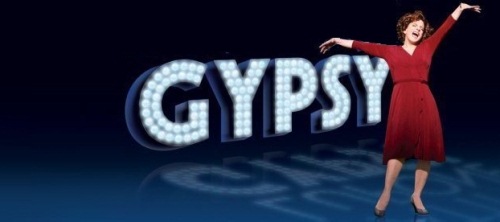
Musical
Musique: Jule Styne • Paroles: Stephen Sondheim • Livret: Arthur Laurents • Production originale: 13 versions mentionnées
Dispo: Résumé Synopsis Commentaire
Vidéos:
Gypsy s'inspire des mémoires (1957) de Gypsy Rose Lee, une célèbre strip-teaseuse et se concentre sur sa mère, Rose, dont le nom est devenu synonyme de «the ultimate show business mother». Le musical suit les rêves et les efforts de Rose pour présenter sur scène ses deux filles et jette un regard affectueux sur la dureté de la vie du show-business dans l'entre-deux guerres. Le personnage de Louise est basé sur Lee, et le personnage de June est basé sur la sœur de Lee, l'actrice June Havoc. Le musical contient de nombreuses chansons devenues des standards populaires: Everything's Coming up Roses, Together (Wherever We Go), Small World, Some People, Let Me Entertain You, All I Need Is the Girl, et Rose's Turn. Ce musical est souvent considéré comme l'une des plus belles réussites du théâtre musical classique du milieu du XXème siècle, souvent appelé le «book musical». Il est considéré comme le meilleur musical américain par de nombreux critiques et écrivains, parmi lesquels Ben Brantley («Ce qui est peut-être la plus grande de toutes les comédies musicales américaines...») et Frank Rich. Rich a écrit que «Gypsy n'est rien d'autre qu'une réponse provocante - et dans son propre style - au Roi Lear.» Le critique de théâtre Clive Barnes a écrit que «Gypsy est un des meilleurs musicals...» et décrit le personnage de Rose comme «l'un des rares personnages vraiment complexes dans la comédie musicale américaine... »
Genèse:
Résumé: Basé sur une histoire vraie, la vie de la légendaire artiste burlesque Gypsy Rose Lee, ce musical raconte l'histoire de Momma Rose et de ses deux filles, Baby June et Louise, voyageant dans tous les Etats-Unis pour présenter leur numéro de vaudeville. Mais les temps changent et les spectateurs deviennent de plus en plus exigeants. Et les deux jeunes filles ont leurs propres ambitions… La montée du burlesque s’impose et rien ne sera jamais la même chose pour Momma Rose.
Création: 21/5/1959 - Broadway Theatre (Broadway) - représ.

Musical
Musique: Jule Styne • Paroles: Adolph Green • Betty Comden • Livret: Garson Kanin • Production originale: 0 version mentionnée
Dispo: Résumé Génèse Liste chansons
Genèse: The show opened on Broadway at the St. James Theatre on December 26, 1960, transferred to the 54th Street Theatre on December 25, 1961 and closed on January 13, 1962 for a total of 400 performances. Scenic design was by Boris Aronson, costume design by Irene Sharaff with assistance from Florence Klotz, and choreography was by Marc Breaux and Dee Dee Wood. The London West End production opened at the Prince of Wales Theatre on October 12, 1961 and ran for 169 performances. It starred Max Bygraves, Maggie Fitzgibbon, Steve Arlen and Jan Waters. Encores! At New York's City Center presented a concert version in 1999, starring Nathan Lane, Brian Stokes Mitchell, Heather Headley and Randy Graff. The 42nd Street Moon theatre company, San Francisco, California production ran in August 2001.
Résumé: Hubie Cram is "a loser endlessly scheming to win big." His long-suffering patient wife Kay urges him to "Take a Job," while he plots. He finds three pals, Fatso O'Rear, Brains Berman and Skin Demopoulos, and they scheme to enter the juke-box business ("It's Legitimate"). Soon they have 300 juke-boxes, which they plan on selling to John Henry Wheeler, a record producer. Hubie discovers a naive singer, Tilda Mullen, and they plan their future ("Ambition"). At a fancy nightclub Hubie explains, and demonstrates, gangster's behavior that he learned from watching the Late Late Show. Kay compares her abandoned comfortable existence with the insecurity of life with Hubie ("Adventure"). Tilda and Wheeler fall in love ("Make Someone Happy"). In the end Hubie realizes that he has nothing except a wonderful marriage.
Création: 26/12/1960 - St. James Theatre (Broadway) - représ.
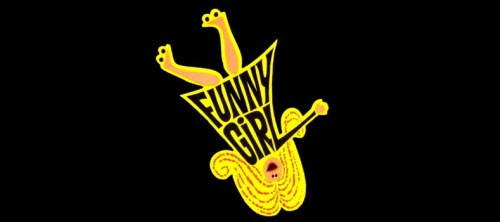
Musical
Musique: Jule Styne • Paroles: Bob Merril • Livret: Isobel Lennart • Production originale: 9 versions mentionnées
Dispo: Résumé
Genèse:
Résumé: Zigfield Follies star Fanny Brice reflects on her life while awaiting the release of her husband, entrepreneur and gambler Nicky Arnstein, from prison.
Création: 26/3/1964 - Winter Garden Theatre (Broadway) - représ.
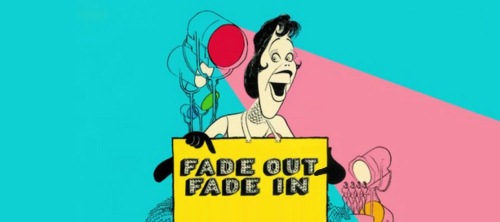
Musical
Musique: Jule Styne • Paroles: Adolph Green • Betty Comden • Livret: Adolph Green • Betty Comden • Production originale: 0 version mentionnée
Dispo: Résumé Génèse Liste chansons
Genèse: After six previews, the Broadway production opened on May 26, 1964 at the Mark Hellinger Theatre, and closed on April 17, 1965, after 274 performances. Directed by George Abbott and choreographed by Ernest Flatt, the cast included Carol Burnett as Hope Springfield, Dick Patterson as Rudolf, and Lou Jacobi as Lionel Z. Governor, with Jack Cassidy and Tina Louise in supporting roles. Cassidy was nominated for the Tony Award for Best Featured Actor in a Musical. Excellent reviews lead to a box office bonanza, and in its early weeks the show consistently outgrossed competitors Hello, Dolly! and Funny Girl. Then Burnett was sidelined due to a serious neck injury sustained in a taxi accident. The production temporarily shut down, then reopened with Betty Hutton in the lead. After recuperating, Burnett returned to the cast, but left shortly afterwards to participate in The Entertainers, a television variety series her husband Joe Hamilton was producing for CBS. When the show's producers threatened a breach-of-contract lawsuit, Burnett returned, but the financial losses sustained during her two absences proved to be insurmountable, and the production soon was shuttered. An original cast recording was released by Decca Records. When Burnett created her eponymous variety series in 1967, she hired Fade Out - Fade In choreographer Flatt and lead dancer Don Crichton to join the creative team.
Résumé: Chorus girl Hope Springfield, full of hope but not much talent, accidentally is given the starring role in a new movie. When the error is discovered, heads roll and the completed film is shelved. But Rudolf, the nephew of studio head Lionel Z. Governor, takes a liking to the girl and arranges for a sneak preview. The movie is a success, Hope (rechristened Lila Tremaine) becomes a star, and in true Hollywood happily-ever-after fashion she and Rudolf walk off into the sunset hand-in-hand.
Création: 26/5/1964 - Mark Hellinger Theatre (Broadway) - 274 représ.
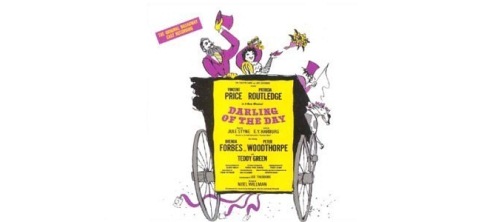
Musical
Musique: Jule Styne • Paroles: E.Y. Harburg • Livret: Nunnally Johnson • Production originale: 1 version mentionnée
Dispo: Synopsis Génèse Isnpiration Liste chansons
Genèse: In spite of a score still admired by many critics, the show's pre-Broadway run was plagued by difficulties, with three directors and five librettists attempting to resolve perceived problems. The musical finally reached New York City where, following three previews, it opened on January 27, 1968 at the George Abbott Theatre and closed after only 31 performances. Choreography was by Lee Theodore, staging by Noel Willman, scenic design by Oliver Smith, costumes by Raoul Pene Du Bois, and lighting by Peggy Clark. Johnson, upset with all the changes, demanded his name be removed from the credits. The musical starred Vincent Price (in his first and only Broadway musical) as Priam Farll and Patricia Routledge as Alice Challice. Also featured were Brenda Forbes and Peter Woodthorpe. Routledge won the 1968 Tony Award for Best Actress in a Musical. Reviews were mixed. The show was Price's first singing role since the 1940 film The House of Seven Gables. Price had once been a member of the Yale Glee Club and proved to have an adequate singing voice. Harburg and Styne considered the piece their best work. An original cast recording was released by RCA Victor. Attempts at major revival have made little headway, although there have been several staged concerts and one fully staged revised version. 42nd Street Moon in San Francisco, California, presented the musical as a staged concert in 1994. The York Theatre Company, in New York, presented the musical in two staged concerts, in 1998 and 2005. Their 2005 concert starred Beth Fowler, Rebecca Luker, Simon Jones and Stephen Mo Hanan. Light Opera Works, in Evanston, Illinois, presented a fully staged version in 2005 revised by Erik Haagensen based on his earlier work for the York Theatre Company concerts. This was the first complete staged production since the musical closed on Broadway. In 2010, the London Discovering Lost Musicals series presented the show in concert at the Oondatje Wing Theatre - National Portrait Gallery, starring Nicholas Jones as Priam and Louise Gold as Alice.
Résumé:
Création: 27/1/1968 - George Abbott Theatre (Broadway) - représ.

Musical
Musique: Jule Styne • Paroles: Bob Merril • Livret: Peter Stone • Production originale: 2 versions mentionnées
Dispo: Synopsis Génèse Liste chansons
Genèse: Based on the screenplay by Billy Wilder and I. A. L. Diamond, the original musical version was entitled “Sugar”. In spite of a number of pre-production problems, the show managed to run for 505 performances in New York. This London version originated at the Churchill Theatre, Bromley and was heavily revised, with the emphasis switched from the character of Sugar to the show’s star and director, Tommy Steele. It was also given a new title – the same as the famous film. It was damned by the critics – inevitably known as “Some Like it Luke Warm”. Tommy Steele was forced to withdraw from the cast following an accident, and as a result, the show soon closed, apparently having lost over £2 million.
Résumé:
Création: 9/4/1972 - Majestic Theatre (Broadway) - 505 représ.
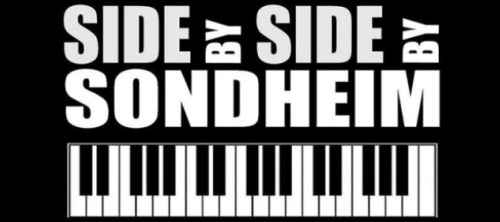
Musical
Musique: Jule Styne • Leonard Bernstein • Richard Rodgers • Stephen Sondheim • Paroles: Stephen Sondheim • Livret: *** Divers • Production originale: 12 versions mentionnées
Dispo: Commentaire Génèse Liste chansons
Genèse: The revue had its première on May 4, 1976 at London's Mermaid Theatre, where it ran for 59 performances. It subsequently transferred to Wyndham's Theatre and then the Garrick for a grand total of 806 performances. Ned Sherrin directed, but Sondheim also worked with the cast and made many suggestions. Hal Prince produced the Broadway version, and persuaded Actors' Equity Association to allow the original British cast to transfer with the show. The production, again directed by Sherrin, opened on April 18, 1977 at the Music Box Theatre, and later transferred to the now-demolished Morosco Theatre. Between the two venues, it ran for a total 384 performances and 6 previews. It is one of the few shows to have the distinction of its entire cast being nominated for Tony Awards (Best Featured Actor in a Musical and Best Featured Actress in a Musical). A subsequent 1978 U. S. national tour starred Martin, Larry Kert, Barbara Heuman, and Hermione Gingold as the Narrator. A London West End revival opened at the Venue Theatre on May 1, 2007, and closed June 23, 2007, after 62 performances and 4 previews. The cast included Abbie Osman, Alasdair Harvey and Josie Walker, with rotating narrators. The musical was directed by Hannah Chissick with musical staging by Adam Cooper. International Numerous international productions have been mounted, including a production in Ireland in 1996 which starred Rebecca Storm, Brendan O'Carroll as the Narrator with Susie Fenwick, Enda Markey and Sarah-Jane Bourne. A production at the Seymour Centre in Sydney, Australia ran in 2011, and starred Amelia Cormack, Margi De Ferranti, Enda Markey and Jessica Rowe as the narrator. This production toured Australia in 2012, with Rachael Beck and then Lucy Maunder replacing Amelia Cormack; Michael Falzon replacing Markey and Geraldine Turner replacing De Feranti. On Friday 20 April 2012, a gala performance of the show took place at Theatre Royal, Sydney. Headlined by Ruthie Henshall and starring an array of Australia's leading musical theatre talent including Rachael Beck, Geraldine Turner, Peter Cousens, Enda Markey - who also produced, Lucy Durack, Ben Lewis, Stephen Mahy, Amanda Muggleton, Michael Falzon, Virginia Gay and many more.
Résumé:
Création: 4/5/1976 - Mermaid Theatre (Londres) - représ.
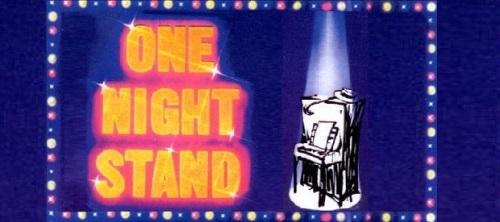
Musical
Musique: Jule Styne • Paroles: Herb Gardner • Livret: Herb Gardner • Production originale: 1 version mentionnée
Dispo: Résumé Génèse Liste chansons
Genèse: One Night Stand is a musical with a book and lyrics by Herb Gardner and music by Jule Styne. Its plot centers on a songwriter who feels he's past his prime. Styne had approached Gardner about adapting his play A Thousand Clowns for the musical stage, but Gardner was more interested in working on an original project. According to producer Joe Kipness, the collaboration was ill-conceived, since the two men could not agree about anything. The Broadway production, directed by John Dexter and choreographed by Peter Gennaro, began previews at the Nederlander Theatre on October 20, 1980. After eight performances, it closed without ever officially opening. The cast included Charles Kimbrough, Catherine Cox, Jack Weston, and Brandon Maggart. A cast album was released by Original Cast Records.
Résumé: A playwright at the end of his emotional tether contemplates taking his own life, but through connection with a beautiful actress, and with the support of a wild cast of characters, our hero finds the courage to face his art and his life and move forward.
Création: 20/10/1980 - Nederlander Theatre (Broadway) - 0 représ.
